
The Blue Angels, the elite US Naval flight demonstration squadron, showcased their exceptional precision flying skills, and were the headliner at the air show at the Marine Corps Base Hawaii (MCBH) this past weekend. They have not flown over Kaneohe Bay in Oahu for seven years. The airshow was also celebrating the centennial of the US Navy first landing of a jet on an aircraft carrier.
We have not seen the Blue Angels fly for more than a decade, since we used to watch them practice over the SF Bay when we lived in California. The show was generally very well organized… with one exception. There was no detailed schedule of events available, and no staff that we talked to knew the order nor when each activity would start. ☹
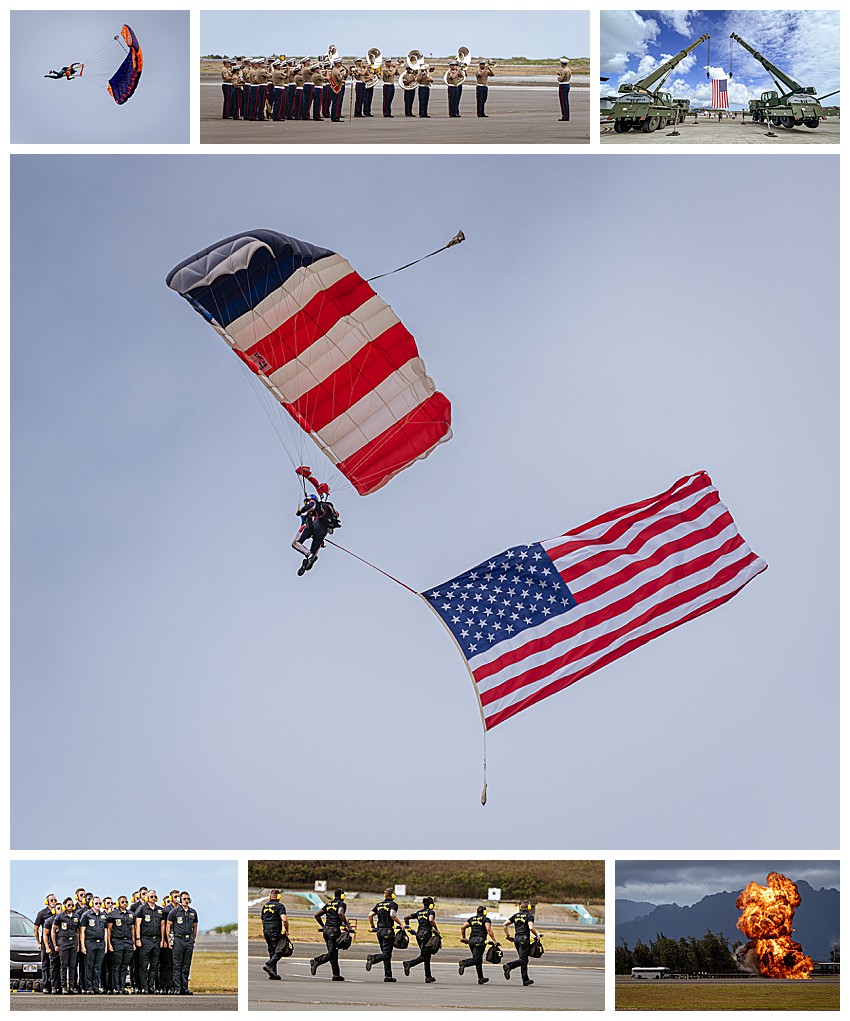
We arrived when the gates first opened at 10AM and claimed our VIP seats, we were served a continental breakfast and catered lunch. At 11AM, the show started with a traditional Hawaiian blessing, and then the Marine band played the National Anthem (upper center). At noon the action began with the Flying Leathernecks jumping out of a US Air Force C-17 Globemaster overhead with their high performance parachutes (upper-left and center).
Once things did start up, the show was every bit as good as we had hoped. At one point, there was a simulated attack assault, combining the joint forces of the US Marine Corps MV-22-Ospreys, Air Force F-22 Raptor jets, Air Force F-16 Fighting Falcon and Infantry Marines. They used live ammo in a fiery demonstration (lower-right) showing how an area can be cleared before landing the ground troops. When the Blue Angels arrived, they come with a substantial crew to support them (lower-left and lower-center).
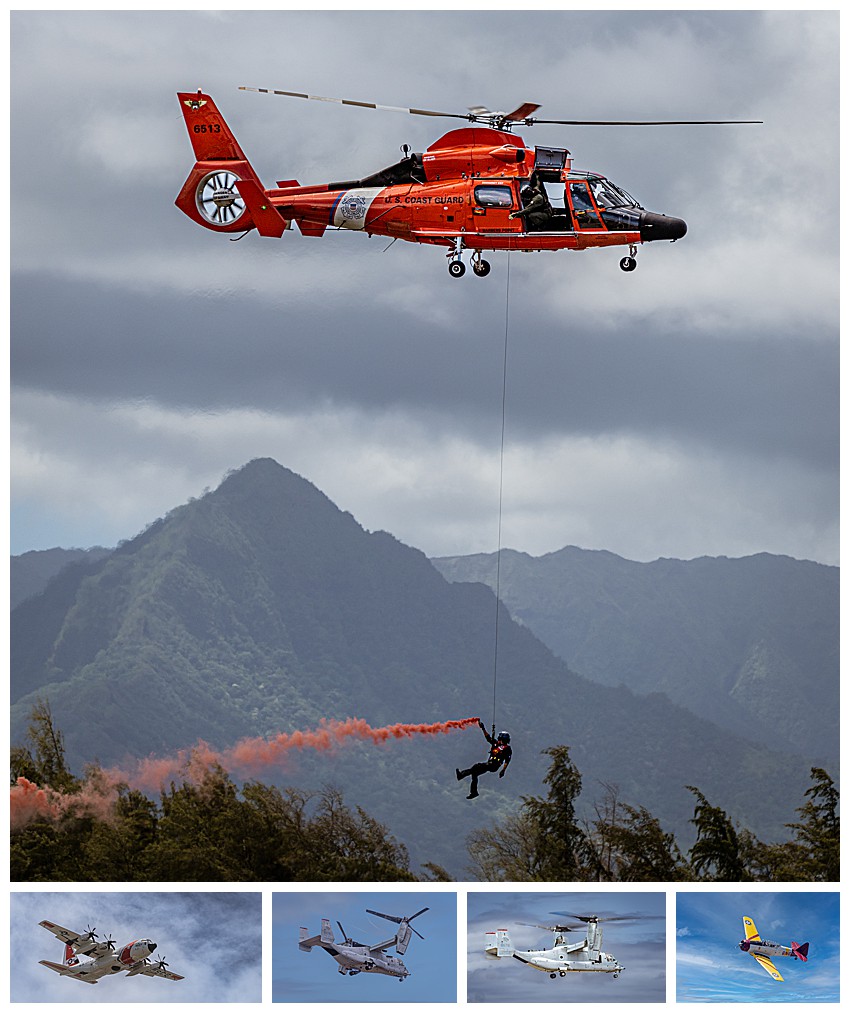
The initial aircraft were propeller based. The Coast Guard Search and Rescue’s team demonstrated their sea rescue techniques, including showing how a flare could be used in turbulent seas to locate the men once in the water (top). The capabilities of long range cargo aircraft was also demonstrated (lower-left). The Navy’s Bell Boeing Osprey also spent quite a bit of time showing off its tilt rotor vertical and short takeoff capabilities (lower-center two images).
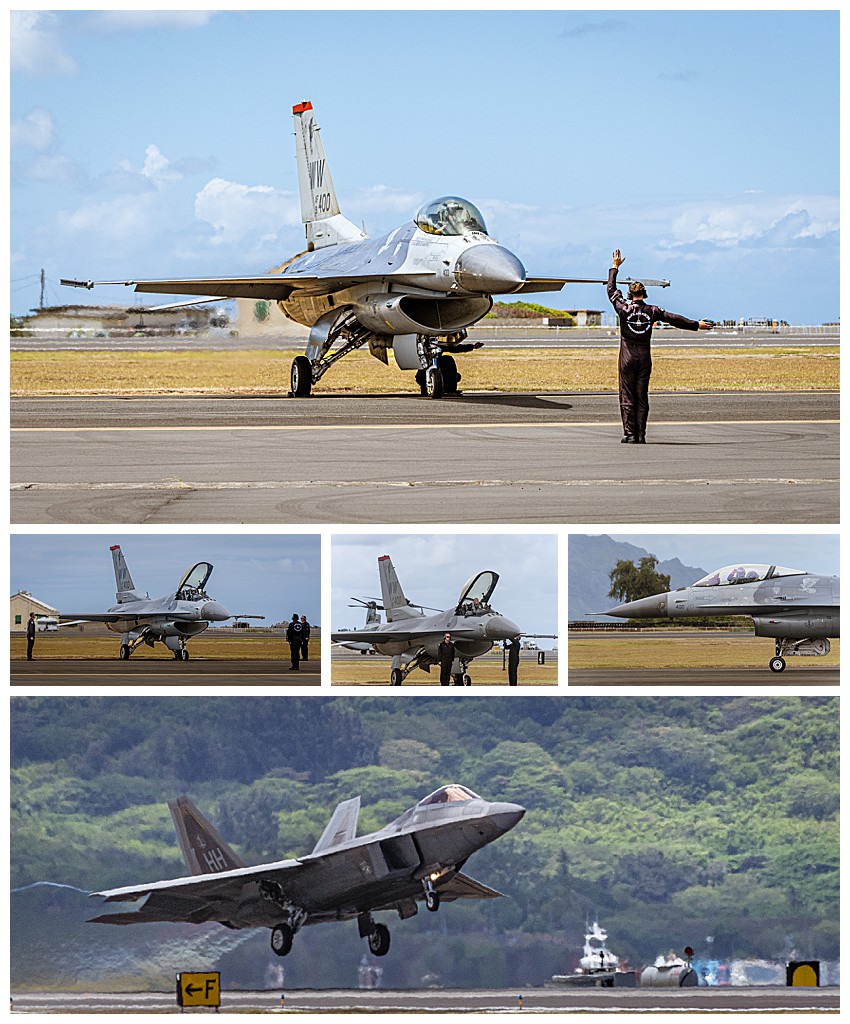
We had ringside seats, and the F-16 was parked directly across the runway from us, giving us an unobstructed view as the pilot and his team prepared for flight (top), taxied down the runway waving to us (center-right). The F-22 Raptor was also showing off its capabilities, and you can see it launching in the bottom image.
The Lockheed Martin’s F-22 Raptor is an American single seat stealth tactical fighter aircraft and demonstrated it’s sheer power (top speed up to 1500 mph). It is surprisingly quiet at lower speeds though, allowing it to easily sneak into enemy territory without being heard. When the F-22 flew past us in quiet mode, though it was only 30 feet away when it passed, it sounded no louder than our car !
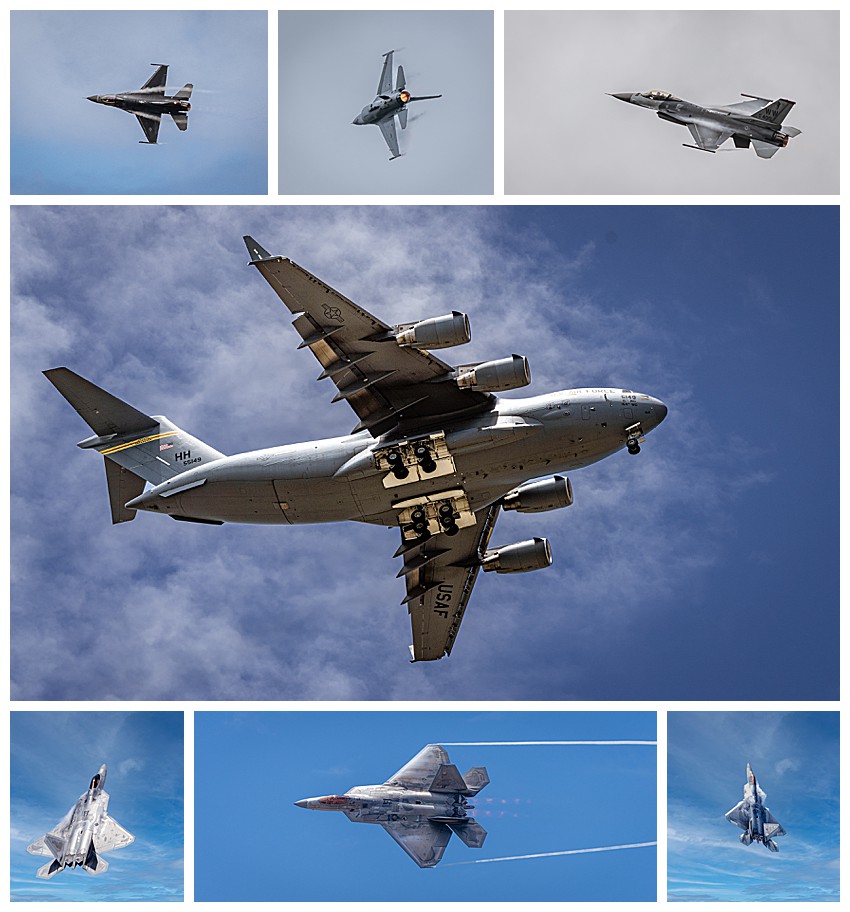
F-16 Fighting Falcon (top row) and F-22 Raptor Fighting jets (lower row) also showed off their power. The biggest plane of the day was the Boeing C-17A Globemaster (center). This massive monster demonstrated taking off and landing in less than 3500 feet. (By comparison, our last airplane, a Turbo Twin Comanche with only 6 seats needed over 1000 feet) It was also able to land, back up, discharge or load its cargo, then take off again in minutes, making it the workhorse for getting men and equipment in and out of tight spots around the world. For the first time, a jet broke the sound barrier (770 mph) when they flew over the top of us.
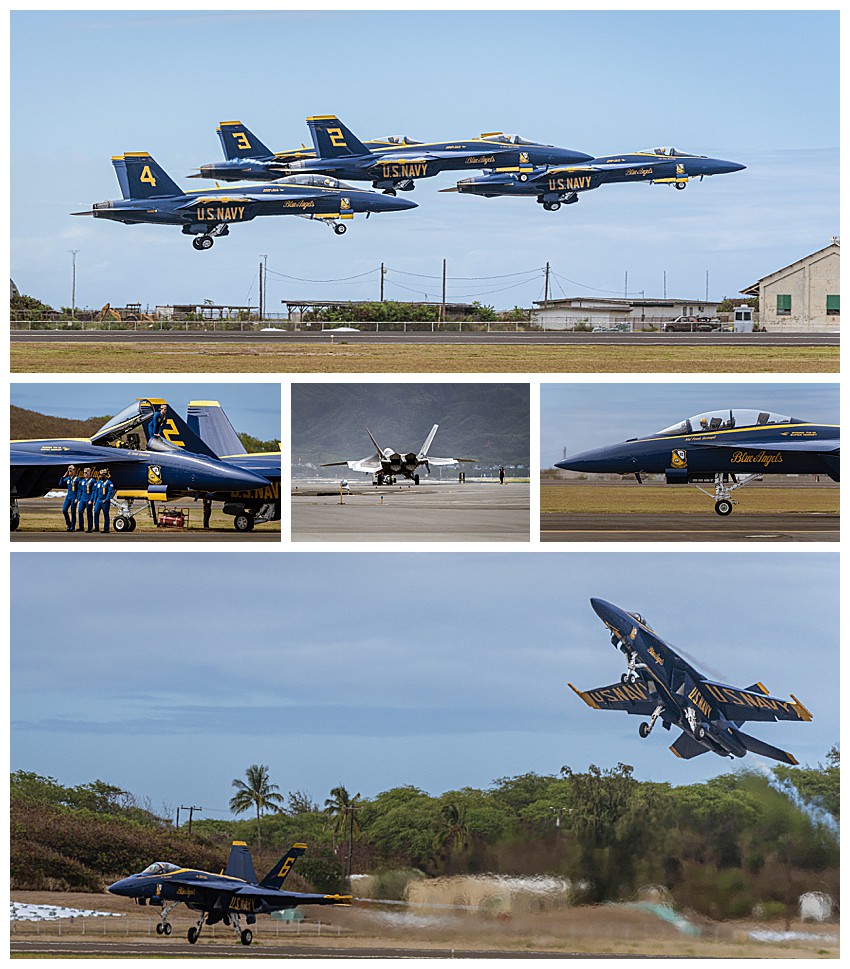
The headliner of the show was the Navy’s elite Blue Angel squadron. They flew last, and their preparation and pilot loading were a show unto itself (center-left). As each F/A-18 Super Hornet passed by, the pilot would wave (center-right), then take off nearly vertical mere meters from us (bottom). Once airborne, they performed low level formation pass, no more than a dozen meters above the runway (top).
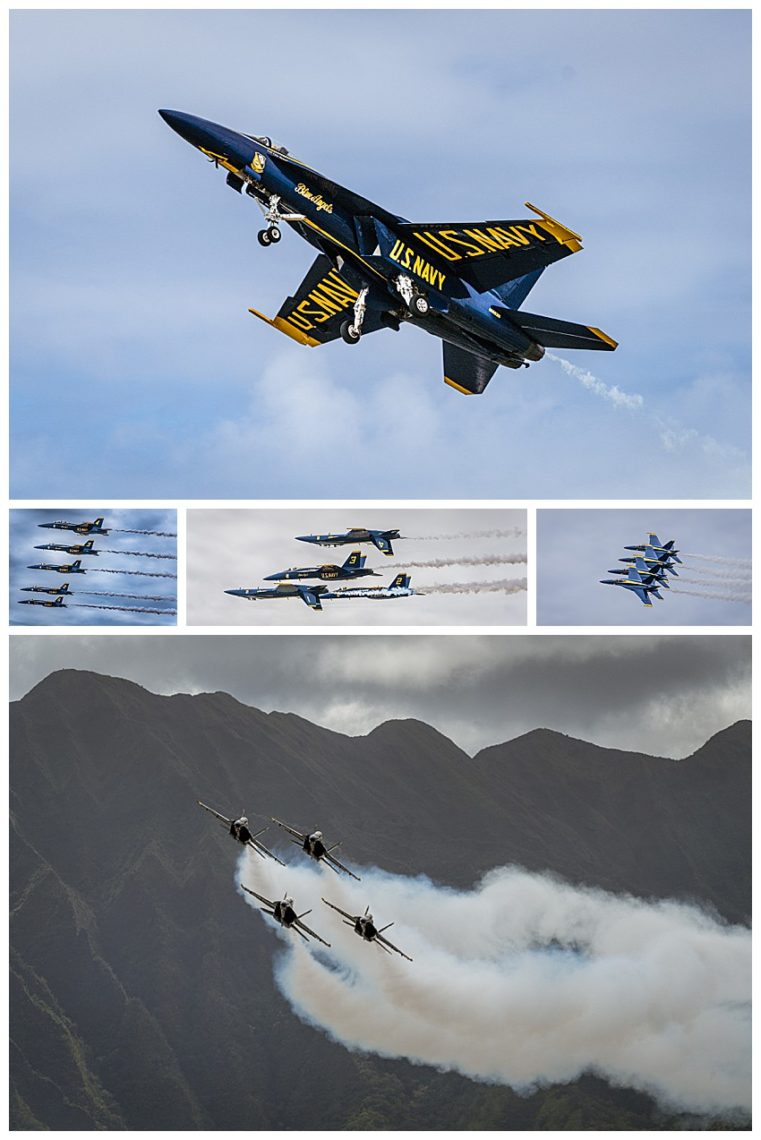
The Blue Angels are well known for their tight formation flying, and they spent the next 60 minutes enthralling the audience with their precision flying and teamwork. Interesting to note is that the Blue Angels fly some of their formations with their landing gear down, to reduce their speeds at air shows, to make them more easily viewed.
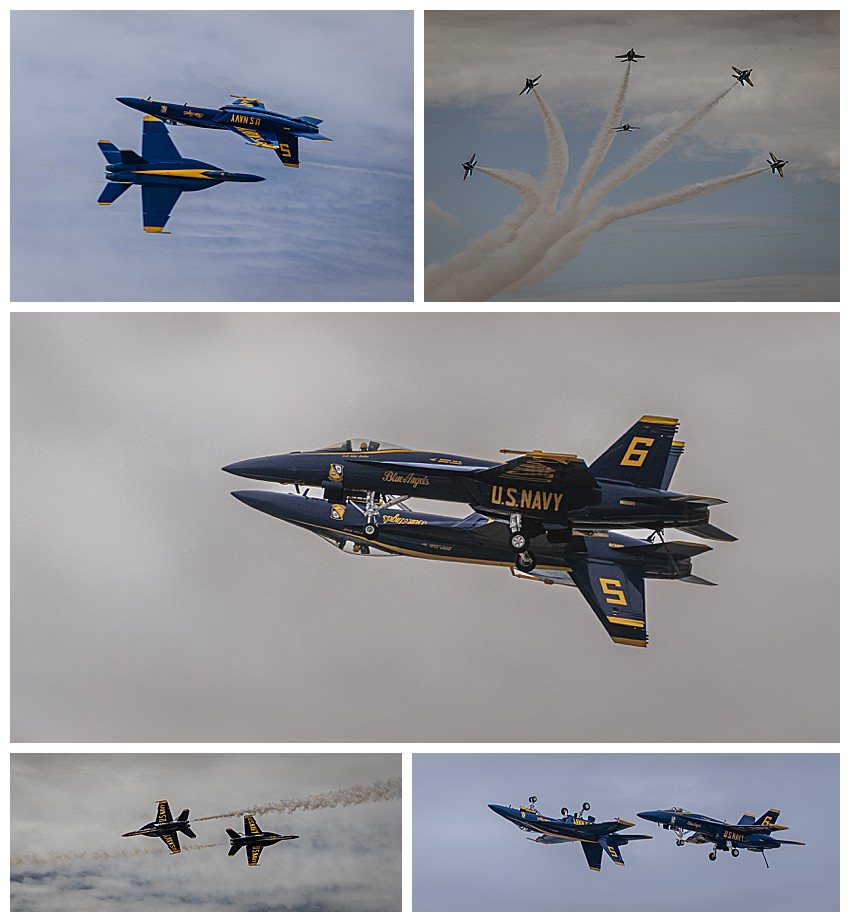
Each plane can fly at up to 1400 mph, though they limit their airshow speed to 700, to stay under the sound barrier. When doing cross-over demonstrations (upper-left and lower-left), their closing speed approaches 1400 mph, and even when my camera is set to 10 frames per second, I completely missed the crucial moment in many of the passes. Top Gun would be proud of their incredible flying skills!
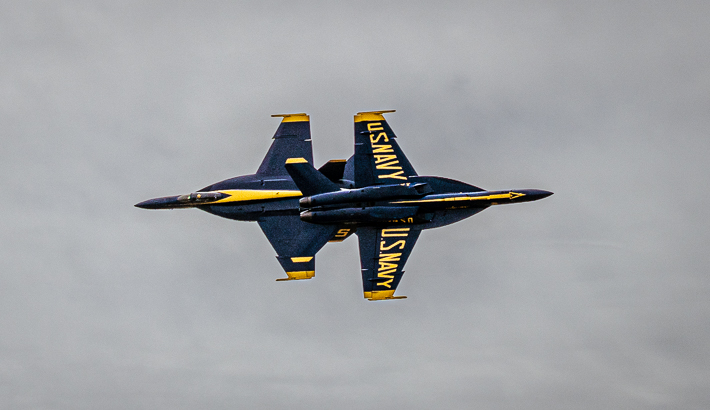
At the end of the day, we left exhausted, and with stiff necks from looking up so long… often with our jaws on the ground. This was definitely an enjoyable and exhilarating way to spend a sunny Sunday afternoon.